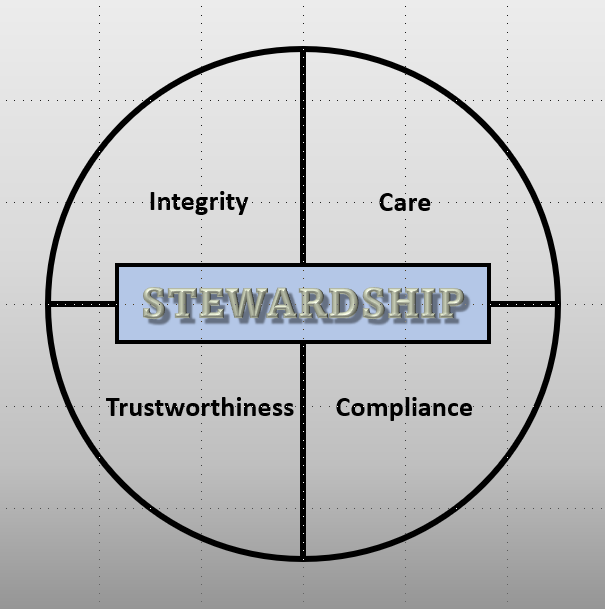Introduction
Everyone is Writing, Blogging, or YouTubing about Artificial Intelligence (AI).
It is the topic of the moment.
So! Why write another one?
I feel much of the material is about the great future we will have with AI.
On the other hand, there are the dooms-day laden works that predict disaster.
The “Terminator” scenario, where AI will eliminate and replace us.
Is either scenario valid?
It is unlikely to be all rainbows and unicorns, equally the idea of avenging cyborgs is the realm of ScFi.
I suspect reality lies somewhere in between.
How can we know and what can we do about it?
Starting work on this blog post, as always, I created a mind map.
But as you can see below it quickly grew to be a monster.

I needed to narrow down my focus.
I am The History PM, so, can history help us with our dilemma?
Let’s see!
The Industrial Revolution
Was the Industrial Revolution a benefit for humanity?
YES and NO
What do I mean? – surely it was a resounding success!
Well, that depends on where and when and who is viewing it.
Let’s look at the events and see.
The first Industrial Revolution took place between 1760 and 1840, followed by a second 1880 and 1914.
There is no question that it resulted in unprecedent change, seeing improvements in manufacturing, transportation, communication, engineering, medicine, and science.
As we in the affluent first world look back we see a period of unrivalled growth and expansion.
But for those who lived through it, things were not so rosy.
Forced to work in dangerous and unhealthy conditions, then return home to their cramped and unsanitary slums, the workers may not have appreciated the wonderful advances to human civilization.

This picture of a young woman and her baby taken in 1910, illustrates the living conditions of the Glasgow working class.1
The Dark Satanic Mills2
One of the first areas of industrialization were the mills.
Previously the work was done by handloom weavers who were often skilled men working from their homes in rural settings.
With the advent of the large urban mills, their skill and experience were no longer required.
In my hometown of Dundee, the jute mills employed women and children, and male unemployment was at astronomical levels. Indeed, women were often the main bread winner, and the men were known derisively as the kettle boilers. (Illustrated by this exhibit at the Verdant Works Museum in Dundee.3)
This was not because of enlightened ideas of gender equality, but because women and children were cheaper than men. They labored in appalling conditions every bit as bad as Upton Sinclair’s portrayal of the Chicago meat industry in his novel “The Jungle.”
The main problems were hearing damage due to the noise of the looms, and respiratory disorders due an atmosphere filled with jute fibers, as well as the ever-present danger of injury due to unguarded machinery.4
In his book “The Technology Trap”, Carl Benedikt Frey compares the Industrial Revolution to our current time.
He looks at two types of technology.
- Enabling Technology
- Replacing Technology
1: An enabling technology is one which makes the worker more efficient and productive. This may involve change and adaptability, but they or most still retain their livelihood.
One such example would be CAD/CAM, which allowed designers and drafters to be more effective.
2: A replacing technology is one that replaces a job or skill.
In the case of the weavers, it did not replace the job, but it did dispense with the skills. Replacing skilled with unskilled labour.
A case quoted by Frey is that of the streetlamp lighters in New York. These six hundred men went round each day at dusk lighting the gas lamps. However, with the advent of electricity they were replaced by a few men throwing a switch in the sub-stations. Automation eventually replaced them as well.
By the mid-20th century these “difficulties” were forgotten, and politicians and economists basked in the golden glow of prosperity.
For us baby boomers the industrial revolution and technology were the reason for our golden years. But we did not have to pay the price! Generations of our ancestors paid the price.
Frey comments in his introduction:
“This story is an accurate description of the long run, but in the long run we are all dead.”5.
It’s all past now and it worked out in the end, so what’s all the fuss?
Well, unfortunately it may be “time to pay the fiddler.”
The Age of Automation
What has our automation age to do with the Industrial Revolution, the times were so different?
Yes, the technologies were quite different, but in other aspects the times were remarkably similar.
We are seeing an increasing disparity in society, with the wealth gap widening and control residing in fewer and fewer hands.
Even before AI we have witnessed a growing divide in society, between the halves and the halve nots.
Many people and areas that enjoyed prosperity during the 20th century are now marginalized and feeling it. Skills that a few decades ago were valued are now redundant, along with the people possessing them. These feeling are manifesting themselves in the rising populism in many western countries.
Cathy O’Neil in her book “Weapons of Math Destruction” (WMD) discusses how algorithms are shaping our lives. Often, they are not transparent and reinforce prejudices. When the results are questioned the black box that is the WMD is impenetrable and protected by “intellectual property” claims.6
In the early 21st century these technologies were heralded as a new leveler, tools for a more open and inclusive society.
True, they have brought many benefits and enabled ordinary people to do and experience things that before were not possible.
When social media first appeared, it was full of promises; promise to connect; promise to enlighten; promise to teach.
It has met some of these goals, but it has also brought many unintended consequences, cyber bullying, cyber fraud, identity theft to name a few.
Paradoxically in the age of social media, loneliness has reached epidemic proportions.
Governments are now taking action to combat loneliness. The UK even has a Minister for Loneliness.
All this and Artificial Intelligence is just getting started.7
AI Onwards and Upwards
At the recent PMI Global Summit (2023), the concept of AI was everywhere,
at breakout sessions, training opportunities, on the vendor stands. AI was going to make your job as a project manager so much more effective.
Artificial Intelligence unquestionably offers many and varied benefits, but just like the technologies of the Industrial Revolution, and the earlier algorithms, it will be a double-edged sword.
It is a disrupter.
We tend to use the word “disrupter” in a positive context, but social systems can only take so much disruption before they break.
So! Should we stop AI?

Even if we wanted, AI is out of the box and in the wild, so that is not an option.
But is this a question for project professionals?
YES!
Stewardship
Why do I say yes to the question?
In August of 2021 the PMI PMBOK®. 7th Edition was released.
This was a change from earlier versions, instead of being process driven it was principle driven.
The first listed in the guide was “Stewardship.”
What does that mean regarding the responsibilities of the project professional?
“Stewards act responsibly to carry out activities with integrity, care and trustworthiness while maintaining compliance with internal and external guidelines. They demonstrate a broad commitment to financial, social, and environmental impacts of the projects they support”. 8
Conclusion
Artificial Intelligence and automation have the potential to be as influential as the technologies of the Industrial Revolution. However, they also have the same destructive potential for our social fabric.
What can we do to avoid the potential damage and the suffering of millions of people affected by these changes?
Generation after generation struggled in poverty and squaller before the full benefits of the industrial revolution was made available to the general population. (It should be noted this was only in the western developed countries. Much of the world still has to feel the full benefits).
As faithful Stewards, we know what can happen, let’s not sleep-walk into another social disaster. The next post will look at some ideas for moving forward whilst minimizing the collateral damage.
NOTES
1 Glasgow City Archives, Photographic Series
2 “Dark Satanic Mills” is from a line in William Blakes poem; “And did those feet in ancient time”.
In the poem Blake is assumed to be comparing the landscape of the industrial revolution to “England’s green & pleasant Land”.
3 Kettle Boiler © Mary Rodgers: Geograph Britain and Ireland
4 She Town & Kettle Bilers: Dundee Women and the mills (thedundeetapestry.com)
5 The Technology Trap – Introduction
6 Weapons of Math Destruction
7 I understand that research has been ongoing for some time, but it is just starting to impinge on our daily lives.
8 The Standard for Project Management – Section 3 – Project Management Principles- Page 24
BIBLIOGRAPHY
- The Technology Trap – Carl Benedikt Frey
- Weapons of Math Destruction – Cathy O’Neil


